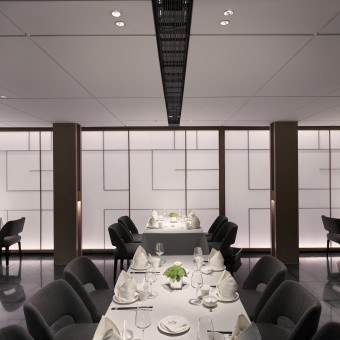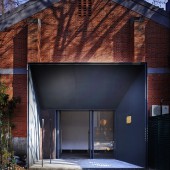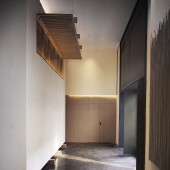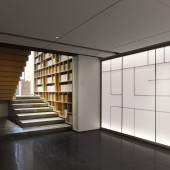#24 Cathay Restaurant Restaurant by Jaco Pan |
Home > Winners > #67638 |
 |
|
||||
| DESIGN DETAILS | |||||
| DESIGN NAME: #24 Cathay Restaurant PRIMARY FUNCTION: Restaurant INSPIRATION: When it evolves to the modern business community and reaches a balance that shifts from large-scale production to a fresh era sparkling technology and service, many of abandoned factories or warehouses still remain unused, despite they are spatial and in good condition. Even lots of obsolete compounds have to be torn down because they could not meet the needs of the time. UNIQUE PROPERTIES / PROJECT DESCRIPTION: This renovated restaurant featuring the local cuisine is located in Western Old Town, Nanjing City. Around two centuries ago, the historical place was used to be a mint during the period of National Revolution and widely known by people. As the time came to its end, those industrial architectures emerged in various fabrics and volumes had started to decline gradually. OPERATION / FLOW / INTERACTION: The main entrance opens up to the busy street on the east and slightly offset to one side, welcoming reception desk guides people into the restaurant. When night falls, twinkling lights extend and start to compose a dynamic melody. Through the front hall to reach the intersection place, step down to the dining room and kitchen with display of chefs. In traditional Chinese restaurant, dining and cook are usually separated in two standalone spaces to keep privacy. In this specific case, the architect integrated them into one and chefs and clients have close interaction and coordination. Participation and intervention accomplish the artistic space along with itinerant tranquility created by the fabric. PROJECT DURATION AND LOCATION: The project started in 2017 in Nanjing and finished in March 2018 in Nanjing. FITS BEST INTO CATEGORY: Interior Space and Exhibition Design |
PRODUCTION / REALIZATION TECHNOLOGY: Materials: wood, painting, stones, overlay paper. SPECIFICATIONS / TECHNICAL PROPERTIES: Area: 1,700sqm TAGS: restaurant RESEARCH ABSTRACT: To some extent, diet and architecture both have the same natural essence. They are closely related to the entire culture and history we are going through, and changing all the time with the development of the society. In Chinese culture, the number 24 represents a lots of common senses, such as the twenty four solar terms, twenty four hours per day. That's where the name of the restaurant comes from. CHALLENGE: It’s tremendously difficult for the architect to proceed from the root, since the existing building was exposed in rain and wind, lack of necessary repair and remained drawings of design. Paying homage to the old-fashioned construction, the team redesigned the façade and entrances in the opposite sides. In the single-storey factory building with a height of over 10 meters, a reborn space deprived from the original infrastructure to organize a two-and-half layers for hospitality with advanced flow. The interiors keep independent from the building structurally to give a new image. Windows on the red brick walls were disorderly arranged and the architect attempted to introduce light of nature into the interior so as to wield in different occasions. Transparent surface made of rice paper embraces the space like women’s veil to hide beauty partially, reducing chaotic shadows due to uneven lighting and structure outside. Lighting going directly through rice paper fabric diffuses and solidifies the settings, and properly equilibrates the inherent sense of coldness in the concrete-made construction. Colors and characteristics in materials complement the ambience forged by spectrum and space. Even in the semi-underground area, visitors still are bale to feel the warmth and grace of the eating house. ADDED DATE: 2018-03-28 18:08:30 TEAM MEMBERS (1) : Jaco Pan, Balulu, Sam, Ruth. IMAGE CREDITS: Images used in the project were shot by Guomin Lee; layouts were made by the architect. PATENTS/COPYRIGHTS: Copyrights belong to Jaco Pan, 2018. |
||||
| Visit the following page to learn more: http://www.minggu-design.net | |||||
| AWARD DETAILS | |
 |
#24 Cathay Restaurant Restaurant by Jaco Pan is Winner in Interior Space and Exhibition Design Category, 2017 - 2018.· Read the interview with designer Jaco Pan for design #24 Cathay Restaurant here.· Press Members: Login or Register to request an exclusive interview with Jaco Pan. · Click here to register inorder to view the profile and other works by Jaco Pan. |
| SOCIAL |
| + Add to Likes / Favorites | Send to My Email | Comment | Testimonials | View Press-Release | Press Kit |
Did you like Jaco Pan's Interior Design?
You will most likely enjoy other award winning interior design as well.
Click here to view more Award Winning Interior Design.








